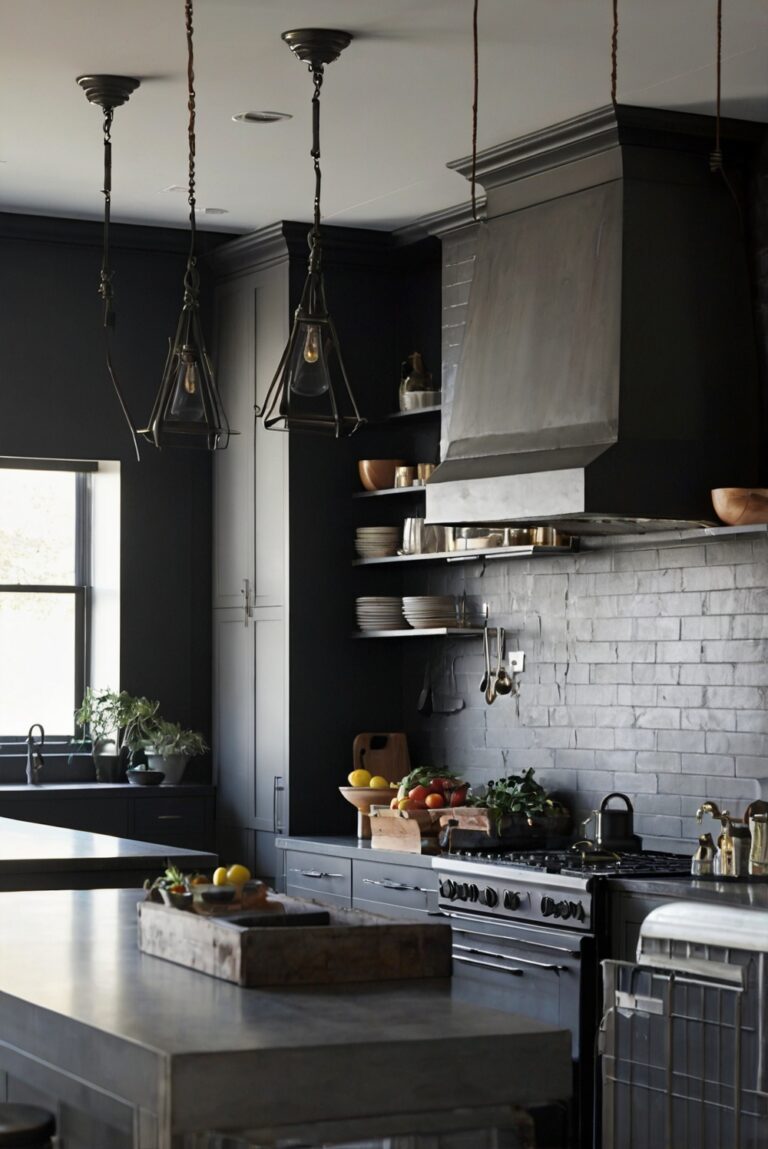How to choose the perfect lighting for your kitchen?
Are you struggling to find the ideal lighting for your kitchen? Discover expert tips and tricks in this daily interior designer routine for selecting the perfect lighting for your space.
How to choose the perfect lighting for your kitchen?
Lighting is a crucial element in any home decorating project, especially in the kitchen where tasks such as cooking and meal preparation require the right amount of brightness. When selecting lighting for your kitchen, consider the following factors:
– Evaluate the size and layout of your kitchen to determine the type and number of lights needed.
– Choose a mix of ambient, task, and accent lighting to create a functional yet visually appealing space.
– Opt for energy-efficient LED bulbs to reduce electricity costs and minimize environmental impact.
– Select fixtures that complement your home interior design and enhance the overall aesthetics of the space.
By carefully planning the lighting scheme for your kitchen, you can create a comfortable and inviting environment for cooking and dining.
“
How to choose the perfect lighting for your kitchen?
Consider the layout and size of your kitchen:
When choosing the perfect lighting for your kitchen, it’s essential to consider the layout and size of the space. Larger kitchens may require more lighting fixtures to ensure adequate illumination, while smaller kitchens may benefit from strategically placed lights to maximize space.
Understand the different types of kitchen lighting:
There are three main types of kitchen lighting: ambient, task, and accent lighting. Ambient lighting provides overall illumination, task lighting focuses on specific work areas, and accent lighting adds visual interest and depth to the space. Understanding these types can help you create a balanced lighting design for your kitchen.
Choose the right color temperature:
The color temperature of your kitchen lighting can have a significant impact on the overall look and feel of the space. Warm light (2700-3000K) can create a cozy and inviting atmosphere, while cool light (3500-4100K) is ideal for task lighting and creating a bright, energizing environment. Consider the mood you want to achieve in your kitchen when selecting the color temperature of your lighting fixtures.
Consider the functionality of the lighting:
When choosing the perfect lighting for your kitchen, consider the functionality of the fixtures. For example, pendant lights are great for task lighting over kitchen islands, while recessed lighting can provide overall illumination without taking up space. Think about how you use your kitchen and select lighting fixtures that will enhance your daily activities.
Seek professional advice if needed:
If you’re unsure about the best lighting options for your kitchen, don’t hesitate to seek professional advice. Lighting designers or interior designers can help you create a customized lighting plan that suits your space and meets your needs. They can also provide valuable insights and recommendations based on their expertise and experience.
1. What are the different types of kitchen lighting options available?
There are three main types of kitchen lighting: ambient, task, and accent lighting. Ambient lighting provides overall illumination and can be achieved through ceiling lights or pendant lights. Task lighting is focused on specific work areas such as the countertop or stove and is often provided by under-cabinet lighting or track lighting. Accent lighting is used to highlight certain features in the kitchen like artwork or architectural details and can be achieved through spotlights or wall sconces.
2. How can I determine the right lighting fixtures for my kitchen?
To determine the right lighting fixtures for your kitchen, consider the size and layout of the space, as well as your specific lighting needs. For example, if you have a large kitchen with high ceilings, a combination of recessed lighting and pendant lights may be ideal. If you have a smaller kitchen, you may opt for flush-mount ceiling lights or track lighting to save space. Additionally, consider the style of your kitchen and choose fixtures that complement the overall design aesthetic.
3. What are some popular lighting trends for kitchens?
Some popular lighting trends for kitchens include the use of LED lighting for energy efficiency and longevity, as well as the incorporation of smart lighting systems that can be controlled remotely. Pendant lights with unique designs or materials like glass or metal are also trending in kitchen lighting. Additionally, incorporating dimmable lighting options allows for versatility in adjusting the brightness levels based on the time of day or specific tasks.
4. How can I create a layered lighting effect in my kitchen?
Creating a layered lighting effect involves combining different types of lighting to provide both functionality and ambiance in the kitchen. Start by installing ambient lighting as the base layer, then add task lighting to illuminate work areas like the sink or stove. Finally, incorporate accent lighting to highlight decorative elements such as open shelving or artwork. By layering these different types of lighting, you can create a well-lit and visually appealing kitchen space.
5. What are some tips for optimizing natural light in the kitchen?
To optimize natural light in the kitchen, consider the placement of windows and doors to maximize the amount of sunlight that enters the space. Use light-colored finishes on walls, cabinets, and countertops to reflect natural light and make the room feel brighter. Additionally, avoid blocking windows with heavy curtains or furniture to allow light to flow freely. If natural light is limited, consider adding mirrors or light-colored backsplashes to help bounce light around the room. By optimizing natural light, you can reduce the need for artificial lighting and create a more inviting kitchen environment.







